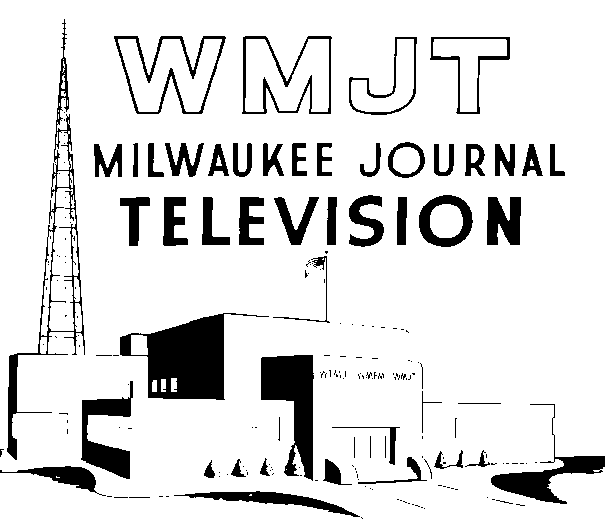

|
For 17 years the Journal Company, Milwaukee, Wisconsin, had been looking forward to the day when it would actually bring television to Milwaukee. That day came on December 3, 1947, after many years of research and experimental work in television by Journal engineers. The dream of television became a reality in Milwaukee when WTMJ-TV, The Milwaukee Journal television station, began regular broadcasts December 3 on channel 3. The station, first in the state of Wisconsin, operates five days a week, Wednesdays through Sundays, with about 20 hours a week of programs. Shows are put on both in the afternoon and evening with about two hours each time. Equipment is all RCA. The Journal Company began working with television in 1930. and a transmitter was readied for experimental broadcasts. On The first application for a license was filed on May 5 of that year September 4, 1931, The Journal Company received a license for experimental station W9XD. In 1938, as a result of difficulties encountered in carrying on research work, the tempo was slowed for a few years. Then in 1941, a construction permit was granted for experimental television station W9XMJ, and later the same year a permit was granted for commercial television station WMJT. (Editor's note: The graphic
accompanying this article
Television was near at hand for Milwaukee when the war broke, but the Defense Communications Board put out an order freezing television construction. However, The Journal prepared itself to be in the best position to resume activities when conditions permitted. Radio City was designed as the first structure to house all three types of broadcasting--AM, FM, and Television. When Milwaukee's Radio City was completed in 1942 as the most modern plant of its kind in the nation, its largest studio was especially reserved for television. Also built at the same time was a television control room, a transmitter building, and a 300-foot tower for television. During the war, the television studio was used for radio programs, while the tower was used for shortwave pickups and FM. ADVANCE PLANNING
This long-range plan was the result of months of extensive study of the entire television picture--a study which included extended visits to television centers and other stations. EQUIPMENT
WTMJ-TV operates with 5 kilowatts of video power and 2 1/2 kilowatts of aural power. With a gain of four afforded by the antenna, the station radiates an equivalent power of 16 kilowatts video and 8 kilowatts aural power. Other new RCA equipment besides the transmitter and antenna includes two image orthicon field camera chains for remote pickups and simple studio shows, microwave relay equipment, a film-camera chain, and a studio synchronizing generator. The station at present has to depend on two portable cameras for all of its broadcasts. Studio-type cameras will be obtained in 1948. Future plans include the building of a new 500-foot tower within a few years. PROMOTION CAMPAIGN
Demonstrations followed at department stores and at Radio City. More than 500,000 people watched television demonstrations put on by WTMJ-TV before the station went on the air. For more than a month before the station began regular broadcasts, test programs were put on the air to test equipment giving training to personnel and to enable dealers to demonstrate sets. As a result of WTMJ-TV's careful planning and practicing, the station began regular operations on December 3 without the usual last minute difficulties and with a minimum of operational faux paus. "T-Day" (for "Television") programs began at 8:00 P.M. with a half-hour dedication program. This included short talks by William E. Walker, assistant to the Governor, representing Governor Oscar Rennebohm of Wisconsin; Milton McGuire, President of the Milwaukee Common Council; Niles Trammell, President of NBC; and Walter J. Damm, Vice President and General Manager of Radio, the Journal Company. Other programs on the opening night included Schuster's Open House, sponsored by the Ed Schuster Company department stores; a Barbershop Quartet program, sponsored by the A. Gettelman Brewery; a night club show, sponsored by RCA dealers; and an NBC television newsreel, sponsored by Gimbel Brothers department store. A sports review with highlights of the 1947 football season was presented by the Wadhams division of the Socony-Vacuum Oil Company. Also on opening night a Wisconsin apparel manufacturers' show of Wisconsin-made apparel was sponsored by the Boston Store. Because the sales department had also been out working before T-Day, many of these programs were not just one-time novelty shots, but the start of regular contracts at card rates, many of them extending for 13 weeks or more. WTMJ-TV is indeed off to a good start. |
